Ancient coins
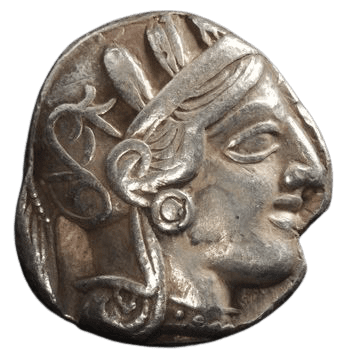
The ancient Greek Athenian tetradrachma
This article places emphasis on the plant iconography of ancient coins. For a more general account of the history of ancient coins see the Wikipedia article here.
Coins of the ancient world established coinage traditions that have continued to the present day – the standardization of metals used, their form, weight and value. But these were not just shaped pieces of metal bullion with a prescribed value. A further tradition developed in classical times was the use of iconography on the coins – images or designs that conveyed messages about politics, religion, and trade.
Ancient coins were rich in symbolism, promoting the attributes of deities and people and conveying many messages from political propaganda to religious celebration. In a world where few people could read or write their evocative designs served as visual narratives that needed interpretation if they were to be correctly ‘read’ and appreciated.
Ancient coins have a special place in numismatics and are valued according to their historical significance, artistic appeal, condition, and scarcity. Many from the Greek and Roman periods were minted in such large numbers that they can be purchased quite cheaply, even today.
Egypt
The convenience of coinage is that it is a form of currency – a combined unit of account, means of payment, and a store of value. Egypt did not have coinage in the form we know today, its wealth lay in the grain production that supported life, reminding us that coinage is also an abstraction, symbol, or representation – it is not the object of need itself. The value of grain as food is directly self-evident.
For Egyptian workers, like those building the pyramids, bread and beer were a form of currency, paid as wage rations because they were staples of the Egyptian diet. There were standard sizes for beer jars, and loaves were baked using a standard recipe.
Exchange of goods occurred mainly in markets through a complex barter system. Metals were sometimes involved but not in the form of coinage we know today.
Egyptian wealth depended on large-scale cereal production, the grain stored in dispersed state granaries that were both secure and convenient. Depositors could then withdraw given amounts or ‘lots’ of grain to make a purchases, or pay tax collectors, priests, and merchants.
There is evidence for a unit of account permitting different values between goods. A text dating from around the year 2600 BCE refers to an accounting unit, the shat as early as the Ancient Empire (2750-2150 BCE, it states “I acquired this house against payment from scribe Chenti. I paid ten shat for it, namely fabric (worth) three shat; a bed (worth) four shat; material (worth) three shat”. So, different objects were valued against the shat. No equivalent of coinage has been found, so the shat may have been an arbitrary unit of account. The shat was linked to the value of gold; one shat was equivalent to 7.5 grams of gold. However, the Egyptians expressed large sums of money in debens, with one deben worth 12 shat and corresponding to 90 grams. So, the shat was worth one-twelfth of a deben. However, from the reign of Ramesses II (1279-1212 BCE the shat disappeared altogether from accounting texts, which no longer referred to anything other than the deben and, it appears, the gold standard was replaced by the silver standard. Gold has always had symbolic significance for early civilizations. In Egypt it was considered skin or flesh of the gods, and gold chains were awarded for good service at ceremonies called the “gold reward”. This divine symbolism would have acted against the introduction of gold coinage. Silver was the material from which the bones of the gods were made but it was an extremely rare commodity only ever imported.
Coinage as we know it arrived in Egypt around 500 BCE with the Greek and the Ptolemaic coins and at a time when the religious significance of gold and silver had diminished.
Greece
The Greek world was divided into competitive city-states (Gk poleis) that included its colonies in Magna Graeca, coastal Sicily and southern Italy. Each city-state produced its own coins and popular designs, each trying to outdo the others in quality of design, and each with its own logo-like emblems depicting local political and mythological themes.
To facilitate trade, these coins followed certain weight standards. The most popular were: the Attic (Athenian), based on the drachma (4.3 g. of silver); the Corinthian, based on the Corinthian stater (8.6 g. of silver), and the Aeginitan (Aegean), based on the Aeginetan stater (12.2 g. of silver). The coinage of each city-state employed symbols drawn from history and myth. These symbols (badges) were representations of the city and made its coins easily recognizable.
Favourites among numismatists include: the owl of Athens and Attica, the shield of Boetia, the turtle of Aegina, satyrs and nymphs of Macedonia, Pegasos (a word meaning ‘strong’) the flying horse for Corinth, the ear of wheat for Metapontum and generally associated with an image of Demeter the goddess of grain on the obverse. For Taras or Tarentum (today’s Taranto) it was a boy riding a dolphin in memory of an ancient myth, a crab on the coin of Sicilian city Agrigentum (Akragas), a labyrinth for Knossos, a horse for Larissa, a bee for Ephesus, and so on. Sometimes the reverse side of the coin was incuse, that is, with an indented design sometimes of the same design element.
The basic coin denomination was the drachm which varied in weight by region and multiplied into the didrachm (two) and tetradrachm (four) (the largest a dekadrachm (ten)). Sometimes the drachm was known by the alternative name stater as a standard Greek unit of weight. A very rough idea of value is that an Acropolis labourer was paid 1 drachm per day.
There were Greek colonies in southern Italy and Sicily, some of the finest decadrachms being produced in Sicily’s city of Syracuse. Carthage was a semitic region and here the stater was made of the silver and gold amalgum electrum.
Greek military hero Alexander the Great conquered Egypt his horned image (after the Egyptian god Amun) appearing for some time on subsequent coins of the Hellenistic period and sealing the tradition of placing rulers on the obverse coin face – images that became more realistic over time as portraiture advanced. In Egypt, after Alexander’s death, Ptolemy, one of his generals was placed in charge initiating a dynasty of Ptolemys that inherited this Egyptian empire producing some of the world’s most exquisite coins.
Two Rosebuds, Lyre between
Greece – Rhodes ¼ drachm – 333-304 BCE Island of Caria Silver/10mm/1mm/0.72g BMC 63 F Rare $70
Punica granatum – Pomegranate
Pamphylia – 3rd century BCE Bronze 1.36g/11mm BMC 71-72, Sear 5441 vf+ – $100
Palm Frond
Judaea 1 prutah: 59-62 CE Porcius Festus Procurator for Nero Jerusalem mint bronze/1.5g/15.00mm Meshorer p76, 345a, Hendin 1351 VF/XF – $100
Godess DemeterWreathed and draped bustObverse
SYRIA Seleukis & Pieria. Apameia. Dated ZOΣ = 277 (34/35 BCE) Bronze/6.89g/20mm F $35
Three Upright Ears of GrainReverse
SYRIA Seleukis & Pieria. Apameia. Dated ZOΣ = 277 (34/35 BCE) Bronze 6.89 g/ 20 mm/ edge milled F $35
Head of Demeter (r) wearing wreath of barley
Lucania, Metapontion 350-300 BCE Bronze 2.69g/15mm F $100
Date-palm TreeSilphion plant lower rhs
Cyrenaica, Cyrene. c. 282-261 BCE Bronze 17mm/5.45g/2h Obv: Head of Zeus-Ammon right ΚΥ-ΡΑ and E in right field. Very rare, brown patina. Ref.: Weber 9957 ; SNG Cop. 1259 ; BMC 297-300 VF – $300
Three Tied Ears of Corn
Cappadocia, Caesarea 1 Drachma – Severus Alexander 222-235 (year 7) Bro/5.3g/20mm Obv: AY K CEOVH AΛEXAN Rev:MHTΡO KAI ET Γ… SNG Cop#291,BMC Greek# 305 – VF – $70
Vitis vinifera – Bunch of grapes on vine
Temnos, Aeolis, AE12, 3rd-1st century BCE. Young Dionysos right, with ivy wreath T-A, Ref: SNG Cop 256; Lindgren I 415; SNG Stockholm 2221; BMC 5 – VF – $90
Apium graveolens var. graveolens – Wild Celery
SICILY, Selinus 520-500 BCE Silver/7.58g/didrachm Sear 730; SNG ANS1#665 – aVF – $800
Vitis vinifera – Vine Leaf with Tendril
JUDAEA – The Jewish War -66-70 CE (hebrew yr 3 = 68/69 CE) 1 PRUTA Bro 3.52g Hendin-1363, Meshorer-204 – $250
Plant motifs
Several plants are used on many different coins in this way and are also used freely in other art forms.[1] They are pictorial themes that have continued through to the present day, the most familiar being palm fronds, olive sprays, laurel branches, fig leaves, vine leaves, bunches of grapes and ears of grain sometimes combined with poppy flower heads. The laurel and olive were the preferred plants for decorative wreaths.
Unidentifiable flowers, as small stylized posies, appear on Roman coins in the hands of Spes a minor goddess of hope based on the Greek Elpis. She appears as a maiden walking to the left, presenting a flower in her right hand and, to walk more easily, holding the hem of her dress in her left hand. These young girls are probably based on the Greek statues of the 7th to 5th century BCE called korai. It was an image of youth, beauty and fresh hope.
Laurel wreaths
Laurel garlands (known down the ages as a crown, taenia, diadem, or coronet) were worn on the head by winners at all the Greek stephanitic (crown) Games. The famous Pythian Games were a Panhellenic celebration held two years after each Olympic Games at Apollo’s sanctuary in Delphi. The games, mostly music, song, acting, and dance to which were later added athletic competitions and chariot racing. They were initiated as a regular 6-8 day event in about 600 BCE to celebrate Apollo’s victory over the dragon Python and his inauguration of the Oracle. The Bay tree was sacred to Apollo and so wreaths of this plant (rather than money or valuable trophies), produced in the city of Tempe in Thessaly, were awarded to winners of the competitions as a symbol of victory. Though pre-dating the Roman Empire by over 500 years the symbolic representation of laurel wreaths and sprays has persisted and is evident on coins, and other works of art. Roman emperors and European monarchs depicted on coins wore laurel wreaths on their heads.
Victoria (Nike) frequently appears on Roman coins with Jupiter (Apollo) and is carrying a laurel branch. Occasionally wreaths of oak leaves were worn by an emperor, known as the Civic Crown, and awarded for saving civilian lives. Oak wreaths also appeared as decoration on coin reverses.
Branches were held in poses that might convey special meaning: held aloft was celebratory, at waist height as an offertory, and held low indicated cleansing. Sanctified by the god Apollo, the laurel was thought to possess many additional powers so a bunch of laurel leaves used over the ground, or for stirring liquids, was treated as an act of purification. Emperor Augustus is sometimes regarded as the first ruler appearing on a coin both wearing a laurel crown and carrying a laurel branch in triumph.
Palm fronds
These were used by the Greeks to indicate the winged Greek goddess Νικη (Nike) whose name means ‘Victory’ and who carries a palm frond aloft. Palm fronds on both Greek and Roman coins are often carried over shoulders and other ways, sometimes shown in isolation. The Greek goddess Nike became the Roman goddess Victoria as the tradition of frond carrying continued on coins. Victoria was also taken up as a personal name, the most obvious being the British Empress Queen Victoria. The use of palm fronds and other plants to decorate the streets during festivities was a symbol of good cheer as represented by the goddess Hilaritas.
Olive branch & tree
An olive branch and tree was presented to the Greek people by the patron goddess of Athens, Athena and a sprig of olive is depicted on the Athenian silver tetradrachm. Minerva, the Roman equivalent of Athena, is shown on Roman coins holding an olive branch aloft. By this time the olive branch symbolism had changed to become a celebration of peace. Minerva was a goddess of war and, perhaps paradoxically, was perceived as achieving peace through conquest, a Pax Romana, so Mars, the male god of war, is also sometimes shown wielding an olive branch, the Pax Romana considered a time when the vanquished were integrated into Roman society, slaves were freed, and pacified peoples were treated with diminished violence.
To hold out an olive branch was to make an offer of peace. The Greek goddess of peace was Eirene with Pax (Latin – peace) her Roman equivalent. Goddess Pax achieved recognition during the rule of Augustus as the daughter of the god Jupiter and the goddess Iustitia (Justice). She is often depicted on Roman coins bearing an olive branch, cornucopia, staff, wheat, or a sceptre but there are many others who also do so, including emperors. The first images of Pax on coinage appear on denarii of 137 BCE, circulated to commemorate a treaty between Rome and Epirus.
Augustus commissioned an altar of peace in her honour, the Ara Pacis and emperor Vespasian built a temple for her on the Campus Martius called the Forum Pacis. A festival in her honor was held each January 3 and she was often associated with spring. Fruits and grains were occasionally associated with the Pax image, possibly indicating the return and abundance of agriculture at the time when veterans of empire settled on farms.
Wheat & barley
Wheat and barley were the staple foods in the Near East from the time of the Neolithic Agricultural Revolution over 10,000 years ago, the major ingredient of bread, beer, and animal feed. One important source of grain was the fertile coastal plains in the Gulf of Taranto Italy that were irrigated by the Bradanos and Kasuentos rivers. This was a region of Magna Graecia known as Lucania, an area of today’s southern Italy that was colonized by Ancient Greeks. This region, possibly the first Achaean colony, was settled in the 7th century BCE under the leadership of Leukippos. Here, in the ancient city of Metapontion, some of the finest coins of Ancient Greece were struck.
Lucania thrived on its agriculture, mainly its production and trade in barley (Hordeum vulgare). Demeter, goddess of grain, was the city deity celebrated each harvest at Apollo’s sanctuary at Delphi. Unsurprisingly an ear of barley, each grain with a long awn, became the emblem most associated with the region’s nomos coin first minted the mid sixth century BCE. Metapontion shared the same coin weight standards as the other major cities of Lucania – Kroton and Sybaris – including the widespread use of incuse imagery on the reverse face although, by the mid fifth century, these had been replaced by coins with the more usual reliefs on both faces.
Of special note, is the illustration on the Ancient Nomos Art web site, which shows the arrangement of grains within the barley ear, such as the 6-row spike with a non-brittle rachis (an axis that doesn’t easily break up into individual grains (botanically the grain is a caryopsis)) which is evidence for domesticated plant varieties in Magna-Grecia around 530 BCE.
Apple
Roman and Greek coins sometimes depict Greek godess Aphrodite (Roman Venus) bearing an apple. This is a symbolic reference to the myth known as ‘The judgement of Paris’. Accounts of the myth vary but in outline it runs that . . . Zeus presided over a banquet celebrating the marriage of Peleus and Thetis (parents of Achilles). Significantly Eris, as goddess of discord, was not invited to the celebration. In anger Eris joined the celebration with a golden apple picked from the Garden of the Hesperides, offering it as a prize for the most beautiful woman present, the apple being inscribed καλλίστῃ (kallistēi – for the fairest one).
Three goddesses claimed the apple: Hera, Athena and Aphrodite and they asked Zeus to be their judge. Avoiding this difficult situation Zeus recommended that Paris, a Trojan mortal be the judge. Paris had impressed with his even-handedness in a contest in which Ares, in bull form, had bettered Paris’s own prize bull. With Hermes protection the goddesses bathed in a spring on Mount Ida but as Paris could not make a decision it was deemed that the decision should be made with them naked. Each attempted to entice him in their favour. Hera offered him the kingdom of Europe and Asia, Athena offered him wisdom and skill in war, and Aphrodite lured him with flowers, song, and the charming attentions of Charites and Horai, even offering him the world’s most beautiful woman who was Helen of Sparta, wife of the Greek king Menelaus. Paris accepted Aphrodite’s gift and awarded her the golden apple, but incurred the enmity of the Greeks, especially Hera. The Greek expedition to retrieve Helen from Paris in Troy was the mythological justification for the Trojan War and, in some versions, the foundation of Rome.
The myth presented artists of the nude female figure with an irresistible opportunity: first Greek, then Roman, and Renaissance
Specimen plants
The following are the better-known plants featuring in Greek coin iconography: the Rose of Rhodes; the Wild Parsley, Selinon, of Selinus, Sicily; the Fan Palm of Kamarina Sicily; the Fig leaf of Kamiros, Rhodes; the Grapes of Boiotia; the Silphium plant of Kyrene, Kyrenaika; the Siculo-Punic Date Palm that was grown commercially in Carthage and Sicily; and the Wheat ear of Metapontion in Lucania where some of the world’s most beautiful and desireable coins were struck.
Palm
The most northerly-distributed palm in the world is the European Fan Palm, Chamaerops humilis which is native to the western Mediterranean. Surviving temperatures well below freezing it grows naturally in southern Italy and France, North Africa and Malta on coastal headlands and hills. It is illustrated on coins of Kamarina, Sicily, around 490 BCE.
Though considered native to North Africa there are no known plants of the Date Palm, Phoenix dactylifera, growing naturally in the wild. Commercially produced dates come mostly from North Africa and the Persian Gulf. This palm appears frequently on the coins of Carthage, and the Siculo-Punic coins of Sicily produced under Carthaginian influence.
The palm is also important in Hebrew culture, cultivated as the Judean Date Palm around the Dead Sea in the south, to the Sea of Galilee and the Hula Valley regions in the north as a staple food and source of shade and shelter in the Judean desert with Jericho becoming a major population as a result. It was well known for thousands of years as a symbol of the Kingdom of Judah and its fertility. It has always been a part of Jewish culture with several mentions in the Hebrew bible and its image appearing on the ancient Hebrew unit of currency, the shekalim. The Hebrew word for the date palm is ‘tàmâr’ and, as a symbol of grace and elegance, it is a name often given to Jewish women.The palm was so much a part of the region’s economy that the Roman emperor Vespasian celebrated the Roman reconquest after the First Jewish Revolt (66-70 CE) by minting Judea Capta coinage, a series of coins depicting Judea as a a date palm, sometimes with a mourning woman beneath, possibly symbolizing the defeated Judea and the tall palm victorious Rome. An ancient coin design depicting a date palm and two baskets full of dates has been reused for the front side of the modern Israeli ten-shekel coin.
In 2005, an ancient preserved 2000-year-old seed sprouted to become the oldest verified human-assisted germination of a seed.
Silphium
The plant’s use dates back into prehistory with both Egyptians and Minoans from Knossos having a unique glyph (formal symbol) for the plant, so widely known and appreciated across the Mediterranean that the Romans regarded it as a gift from Apollo. Ancient Egyptians, before 1100 BCE in the Late Bronze Age, had used the resin of this ‘Giant Fennel’ to secure bandages during mummification but it is best known from ancient Greek accounts.
Silphium – Kyrenaika (Roman 1st century BCE Cyrenaica a region approximating today’s Libya), formerly a berber region, was colonized by ancient Greeks from Thera in 631 BCE at the recommendation of the Oracle of Delphi, the main centre being Kyrene. They were led by Aristoteles who took the local name Battos and founded the Battaid dynasty. Associated with the city of Cyrene were cities of Barca (Barce), Euesperides (Berenice, Benghazi), Teuchira (Arsinoe, Tocra), with the city of Ptolemais also producing silphium coins.
The economy of Kyrenaica revolved around barley, wheat, olive oil, wine, figs, apples, wool, sheep, cattle and silphium, a herb that was native to Kyrenaica and used as a seasoning, perfume, general medicine and aphrodisiac, the Greeks and Romans also using it as a contraceptive. The stalks could be eaten after boiling, roasting etc. The resin also ground and sued as a condiment. No doubt it gained its mystique through its use as a recreational drug. Its image appeared on coins as a symbol of the Kyrenaika region, the critical ingredient being its resin, called laser, laserpicium, or lasarpicium.
Kyrene became a major intellectual and artistic centre of the Greek world, famous for its medical school, academies and architecture in the Hellenistic style. From the academies came the philosophical school of Cyrenaics, founded by Aristippus, who promoted a moral cheerfulness with happiness the sum of human pleasures. Also from Kyrene hailed the poet Callimachus and mathematicians Theodorus and Eratosthenes.
In 525 BCE, after conquering Egypt, the Achaemenid (Persian) army of Cambyses II established a satrapy (Achaemenid Persian province) in the region before being taken by Alexander the Great in 332 BCE following his victories in Egypt.
The plant is rendered on coins in an ithyphallic (phallus-like) manner with testicle-like floral appendages; hence its reputation as an aphrodisiac. The fruit and seed of plants in the parsley family (Apiaceae), that of Silphium, often have the form of a heart and thee appear on coins of Kyrene of the 6–5th century BCE, occasionally with the silphium plant itself and this is sometimes regarded as the source of the familiar heart symbol, especially in regard to sexuality and love. Though presumed extinct, it continued appearing in medicinal texts as late as the Carolingian period.
Theophrastus (371-287 BC), mentions silphium several times in Historia Plantarum: “In the Cyrenaica the cypress grows and the olives are fairest and the oil most abundant. Most special of all to this district is the silphium . . .” He goes on to describe the physical characteristics and plant product preparation, noting that it grows wild and disappears upon cultivation of the land (although he further documents contradicting agricultural anecdotes). The impression is that the plant is relatively newly discovered: “The people of Cyrene say that the silphium appeared seven years before they founded their city; now they had lived there for about three hundred years before the archonship at Athens at Simonides.” Other online references mention legends that silphium was viewed as a “gift from Apollo”.[4][5]
When the Kyrenaica region became a Roman Province (Cyrenaica), silphium was stripped from the land to extinction within 100 years, Pliny the Elder claiming the last stem was collected c. 54-68 CE.[10]
Its actual botanical identity has remained uncertain and long regarded as extinct but with relatives in the genus Ferula, F. assa-foetida treated as a poor substitute. Hippocrates described its medicinal uses and the plant was known to, and described by, Theophrastus who reported that it could not be cultivated, while Pliny claimed that the last known sample of silphium found in Cyrenaica was handed over to Emperor Nero ‘as a curiosity’. Recently, a rare and endemic Ferula species that produces a pleasant-smelling gum-resin was found in three locations near former Greek villages in Anatolia and resembling the plants illustrated on ancient coins and descriptions. Ferula anatolica Boiss. was first collected from West Anatolia by Boissier in 1844 and F. drudeana Korovin from South Anatolia in 1904 by Siehe, but only recently been recollected and redescribed with F. drudeana, growing on Mount Hasan in Turkey, now considered the likely source of silphion.[8][9]
Pomegranate
The pomegranate (Punica granatum)[2,3] is native to the region between Iran and northern India was cultivated for several millennia across the Mediterranean, Middle East and Indian regions. Domestication probably occurred as early as the 5th millennium BCE in the E Mediterranean. In ancient Egypt the pomegranate was a symbol of prosperity and ambition. The Ebers Papyrus, one of the oldest medical writings c.1500 BCE reports its use to treat, among other things, tapeworm. A large pomegranate was found in the tomb of Djehuty who was a servant of Queen Hatshepsut in Egypt. Mesopotamian cuneiform tablets record pomegranates from the mid-third millennium BCE onwards.
The fruit figures in both Greek mythology and art where it is known as ‘the fruit of the dead,’ having sprung from the body of Adonis. Persephone was the goddess of the underworld, sitting on the throne beside her husband Hades, while her mother Demeter denies fertility to the Earth – an explanation for the seasons. Also in Greek mythology the titan Orion married Side (a name that in Boeotia meant ‘pomegranate’). Goddess Hera is portrayed as holding sceptre in one hand and an orb-like pomegranate in the other.
The calyx (sepals) of the pomegranate protrude from the fruit to look like a crown and in Jewish tradition this is considered the ancient source of the familiar crown form.
The pomegranate appears on coins from the ancient Greek city of Side which was in Pamphylia, a former region of the S Mediterranean Asia Minor coast, today’s Antalya province Turkey. It also occurs on the ancient coins of Judea.
Near Paestum, Magna Graecia (southern Italy) is a chapel devoted to theMadonna del Granato, (Our Lady of the Pomegranate) who was treated as the Christian successor to the goddess Hera. The pomegranate is mentioned frequently in the Bible known, for example, in Ancient Israel as the fruit that was brought to Moses showing him the fertility of the ‘promised land’. It was also used as a symbol on clothing and in temples. Solomon’s crown was said to have been based on the pomegranate ‘crown’.
Of particular significance is the Hebrew tradition of ‘Seven Sacred Species’ (Hebrew: שבעת המינים, Shiv’at HaMinim) of plants – two grains and five fruits – claimed by the Hebrew Bible as products of the Land of Israel. These were: wheat, barley, grape, fig, pomegranates, olive (oil), and date (honey). Their first produce each harvest was the only acceptable offering in the Temple. In Jewish tradition it is customary to eat pomegranates on Rosh Hashana, its numerous seeds symbolizings fruitfulness. They also symbolize the mystical aspect of Jewish tradition, the kabbalah, described as entering the ‘garden of pomegranates’ or pardes rimonim.
In modern times, the pomegranate still holds strong symbolic meanings for the Greeks. When one buys a new home, it is conventional for a house guest to bring as a first gift a pomegranate, which is placed under/near the ikonostasi (home altar) of the house, as a symbol of abundance, fertility, and good luck. When Greeks commemorate their dead, they make kollyva as offerings, which consist of boiled wheat, mixed with sugar and decorated with pomegranate. Pomegranate decorations for the home are very common in Greece and sold in most home goods stores
Pomegranates were introduced to Rome via Carthage and did not arrive in England until introduced by John Tradescant the Elder (c. 1570s –1638).
Wheat & barley
Wheat and barley were staple foods since the Neolithic Agricultural Revolution in the Near East over 10,000 years ago. One source of grain was the fertile coastal plains in the Gulf of Taranto Italy that was irrigated by the Bradanos and Kasuentos rivers. This was a part of Magna Graecia[6] known as Lucania, a region of today’s southern Italy colonized by Ancient Greeks. This region, possibly the first Achaean colony, was settled in the 7th century BCE under the leadership of Leukippos. Here, in the ancient city of Metapontion, some of the finest coins of ancient Greece were struck.
Lucania thrived on its agriculture, mainly its production and trade in barley. Demeter, goddess of grain, was the city deity celebrated with each harvest at Apollo’s sanctuary at Delphi. Unsurprisingly an ear of barley became the emblem most associated with the region’s nomos coin and first minted the mid sixth century BCE. Metapontion shared the same coin weight standards as the other major cities of Lucania – Kroton and Sybaris – including the widespread use of incuse imagery on the reverse face although, by the mid fifth century, these had been replaced by coins with the more usual reliefs on both faces.
Of special note, as illustrated on the Nomos coin web site, is the illustration of the organization of grains within the barley ear, such as the 6-row spike array with a non-brittle rachis (an axis that doesn’t easily break up into individual grains (caryopsis). This is early historical evidence for plant domestication in Magna-Grecia around 530 BCE.
Fig
There are three major lobed leaf motifs that occur as coin iconography – the vine, ivy, and fig.
Like the oak to Zeus, the vine was a sacred symbol of Dionysus, whose cult images were made from the soft wood of the tree and crowned with fig leaves.
The fig, Ficus carica, occurs on the silver staters of Kameiros, Rhodes and the Carica settlement of Idyma. Figs were cultivated well before Homer (c. 650 BCE) with Palaeolithic remnants occurring in Thessaly. Greek mythology includes many references to the fig and records that Demeter brought the Attic hero Phytalos the gift of a sprig of fig tree from Eleusis. In Eleusis it is thought that Dionysis.Syke (Syce) is the one of the Hamadryades (a group of Dryad nymphs in the forest near Oxylosis). Figs were valued as a tasty fruit, even when dried. Plato had the surname filosikos, Fig-friend. Persian king Xerxes is said to have once been presented Attic figs prompting him to invade the land where they grew.
Oak
The oak, Quercus spp., has always been admired for the strength of its wood and its generally sturdy and majestic demeanour. Dodona was an oracle (sometimes referred to as an institution) in Epirus in NW Greece and the oldest Hellenic oracle, second only in prestige to the oracle Pythia at Delphi. Herodotus suggests that Dodona dates to the second millennium BCE (Mycenaean-dated archaeological finds concur). Homer describes Dodona as an oracle of Zeus. Here, in Epirus, priestesses and priests gathered in a sacred grove to allow the rustling of oak (or beech) leaves to decide the best course of action. Some suggest the oracular sound originated from bronze objects hanging from oak branches and sounded like a wind chime. Zeus was worshipped at Dodona as ‘Zeus Naios’ or ‘Naos’ (god of the spring below the oak in the temenos or sanctuary).
In the Argonautica of Apollonius of Rhodes, a retelling of an older story of Jason and the Argonauts, Jason’s ship Argo had the gift of prophecy, because it contained an oak timber spirited from Dodona. An ancient oak tree persisted for many years at the temple of Zeus.
The tannin-rich evergreen Kermes Oak, Q.coccifera was the host of the female kermes insect, Kermes ilicis that was then harvested for a scarlet dye contained its dried body fluids. The dye was often part of the tribute paid to conquering Roman armies, and, in the Middle Ages, landlords accepted it as payment for rent. Kermes is the oldest known red dyestuff but inferior to cochineal, obtained from another insect and used by the early Egyptians. The word “kermes” is derived from Arabic qirmiz (قرمز), “crimson” (both the colour and the dyestuff).
Unsurprisingly oak leaves feature in the head decoration of dignitaries on many ancient coins.
Poppy
The poppies referred to in ancient Greece (Gr. Mêkôn) were probably the Corn Poppy, Papaver rhoeas and Opium Poppy, Papaver somniferum which were red flowering spring and summer perennials. It was planted it in crop rotations to revitalise the soil and also found growing naturally in the wheat fields, opiates being extracted from the capsules. The flower was sacred to the goddess Demeter, the flowers used for festival decorations, cakes baked with poppy seeds and opiates used in some of her mystery cults. The flowers were said to spring from her footsteps. She used these help her sleep following the death of her daughter Persephone. Demeter took a youthful lover Mekon and, following his early death transformed him into a poppy flower. The connections with opiates symbolize eternal rest (sleep) while the red colour of the flower symbolizes blood and death. The twin brothers Hypnos (god of sleep) and Thanatos (god of death) were depicted with a crown of poppies and Hypnos’s wand dripped poppy juice. Morpheus, god of dreams, is often depicted with poppies. Throughout history, these flowers have been used as emblems on graves and tombs to represent eternal sleep. The poppy of wartime remembrance is the corn poppy, found in the killing fields of World War 1.
Ivy
Ivy is used as a symbol of the wine god Dionysus. The Anthesteria was one of the four Athenian festivals in honor of Dionysus. It was held each year as a three-day feast (days called Pithoigia, Choës, and Chytroi) from the 11th to the 13th of the month coinciding with the January or February full moon. It celebrated the beginning of spring and maturing of the wine of the previous vintage whose pithoi were now ceremoniously opened. By tradition, social order was inverted, the slaves being allowed to participate. It was also a festival of the dead: either the Keres or the Carians were entertained, roaming the city until they were expelled after the festival. Keres (from κήρ, death or doom) were female death-spirits, the daughters of Nyx (night), dark beings with gnashing teeth and claws and a thirst for human blood; goddesses who personified violent death. A Greek proverb quoted to those who , constantly asked for favours said ‘Out of doors, Keres! It is no longer Anthesteria’.This time of the year was too early to make wreaths out of vine leaves and so the evergreen ivy was used to crown the wine god instead, hence the alternate used of vine and ivy in Dionysian scenes as depicted mainly on pottery.
Thus ivy is used as a wreath motif on coinage of wine regions and with other earth deities such as Demeter and Pan, the evergreen character symbolizing the permanent divine order. The leaves on coins showed different forms, triangular on sterile shoots and heart-shaped on fertile ones (heterophyllia) a character that was noted by Theophrastus.
Parsley, Celery
Parsley, today’s Petroselinum crispum was a popular Mediterranean condiment that is celebrated on the coins of Selinus, Sicily, as early as 500 BCE.
Grape
Rome
Roman coin traditions followed closely those established by their Greek predecessors and these have persisted with little change up to the present day. However, there are few, if any, plant specimens depicted on Roman coins, their plant iconography restricted to decorative and symbolic motifs, using laurels, palms, olive (e.g. Phrygian Antoninus Pius (138-161 CE)). Roman interest in plants appeared to be one relating to economic botany alone – with two interesting exceptions illustrated here, the first being the image of the Goddess Flora, and the second the detailed transverse section of a flower engraved with the precision of a botanical drawing. This coin was struck, we are told in the legend, under the eye of moneyer L AQVILLIVS • FLORVS • III • VIR a moneyer in the reign of (obv.) CAESAR AVGVSTVS (Ref: RIC I 309; RSC 364; BMCRE 46-8 = BMCRR Rome 4553-5; BN 183-5 EF – Rare – Ex Gilbert Steinberg Collection (Numismatica Ars Classica, 16 Nov. 1994) lot 158; Numismatic Fine Arts XVI (2 Dec. 1985) lot 328).
Goddess Flora
1 DENARIUS – 57 BCE Silver/3.44 g/17.78mm Obverse depicts the goddess Flora. Reverse shown two facing soldiers with short swords – worn die Ref: Servilia 15 – VF – $350
Flower (viewed from above) with six petals and staminal bundles, pistil
Augustus (r. 27 BCE-14 CE) 1 DENARIUS – 19/88 BCE Silver 4.00g/10h Wikimedia Commons https://www.cngcoins.com/Coin.aspx?CoinID=115126
Laurus nobilis – Laurel Branch
Seleukis & Pieria, Antioch. Semi-autonomous issue. Time of Hadrian 117-138 CE Bro/14mm F -$80
Papaver – PoppyModius with 4 grain ears & poppy capsule
ROMAN EMPIRE Antoninus Pius – 138-161 CE Silver DENARIUS 2.91g ANTONINVus AVG PIUS PP COS III ANNONA AVG Sear 4050, RIC 62a, RSC 33, BMC 180 – VF – $120
Malus, Venus holding Apple
SESTERTIUS – 164-166 CE Rome mint Bro/26.9g/30mm/square flan/4.5mm plain Lucilla, wife of Lucillus Verus. Obv: LVCILLAE AVG ANTONINI AVG F Rev:-VENUS – SC – Venus standing l, holding apple & sceptre RIC1767 – F+ – $175
Malus, Venus holding palm frond & apple
DENARIUS – 193-6 CE – Rome Julia Domna, wife Septimus Severus -193-217 CE Silver 3.43g/17x19mm Obv: IVLIA DO-MNA AVG – draped bust Rev: VENERI VICTR – Venus r, by column, draped & with palm branch, holding apple Ref: RIC 536 – VF – $80
Media Gallery
Ancient Coins: Coin Metals
Classical Numismatics – 2020 – 11:40
Ancient Coins: Roman Imperial Denominations
Classical Numismatics – 2020 – 19:39
Ancient Coins: Coin Manufacture
Classical Numismatics – 2021 – 11:36
Ancient Coins: Prices?
Classical Numismatics – 2020 – 12:06
Trade in Ancient Greece
CitiesX – 2018 – 8:22
Ancient Coins: Gold Coins
Classical Numismatics – 2020 – 23:22
Ancient Coins: The Drachma
Classical Numismatics – 2020 – 13:50
*—
First published on the internet – 1 March 2019
. . . 16 October 2020 – revision
The Judgement of Paris painted by Peter Paul Rubens (1577-1640), c. 1636 National Gallery, London.
Documentary photo of 17th century painting in a public collection
Courtesy Wikimedia Commons – Accessed 16 October 2020
0 Comments
Submit a Comment
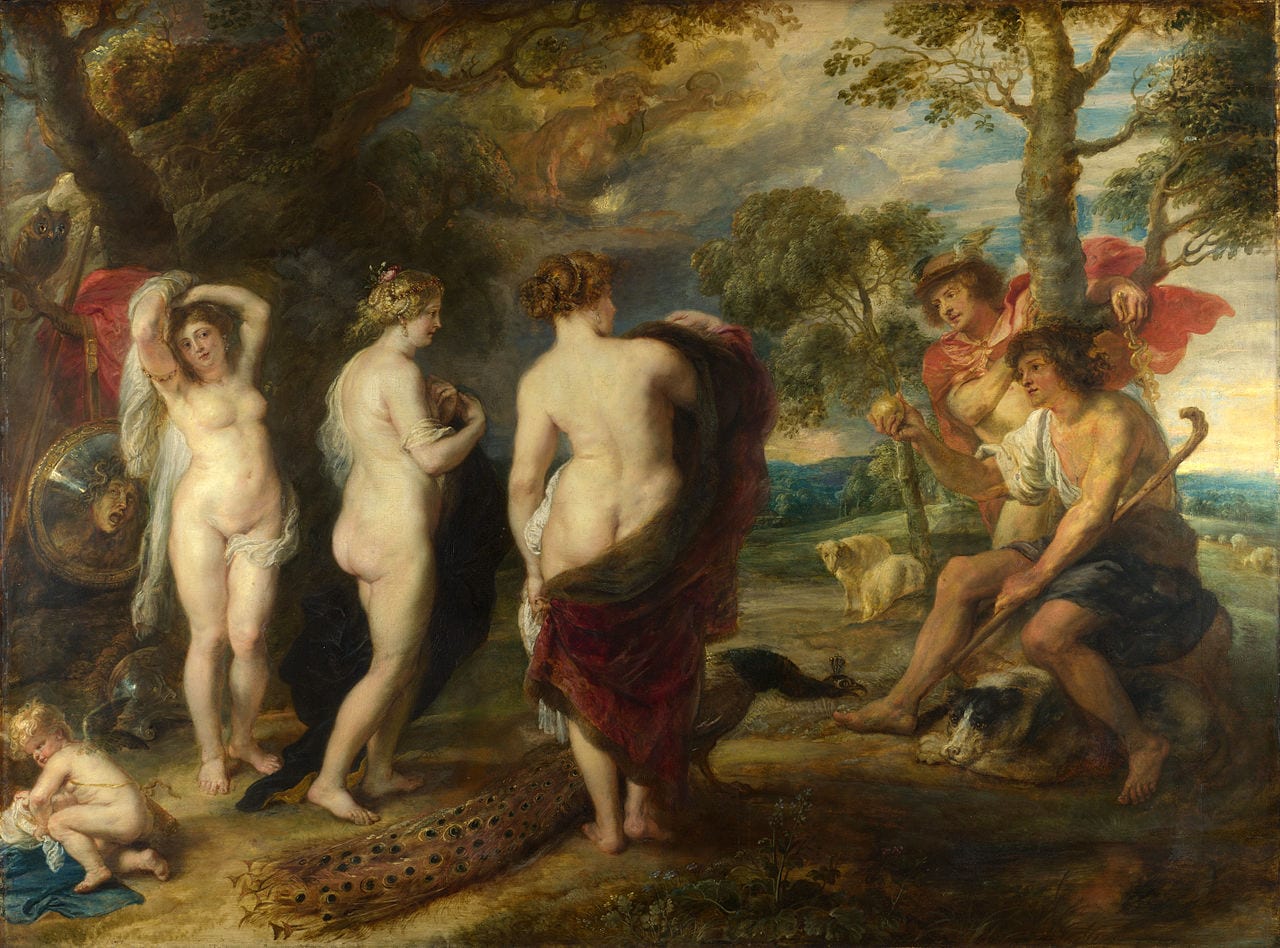



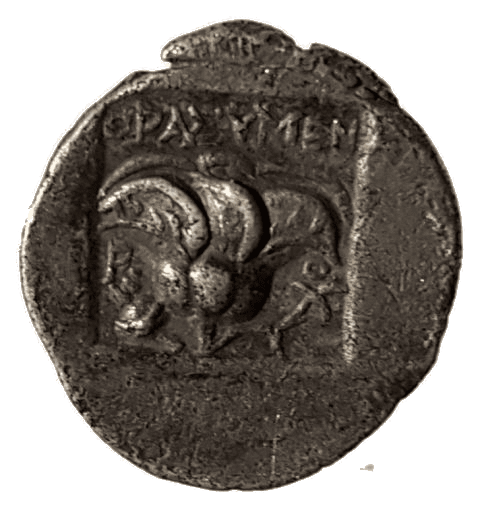
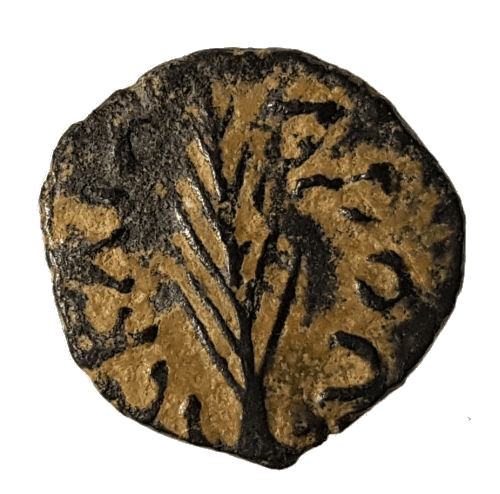
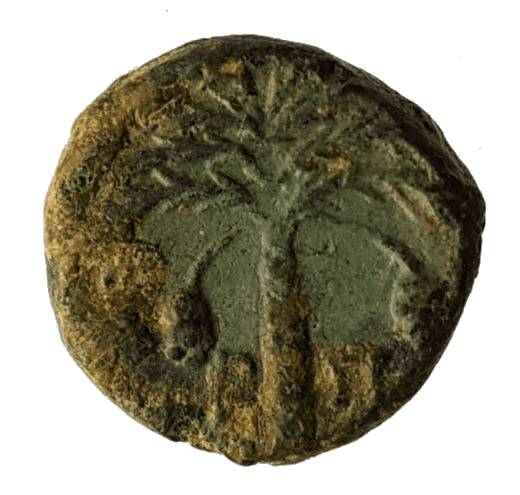
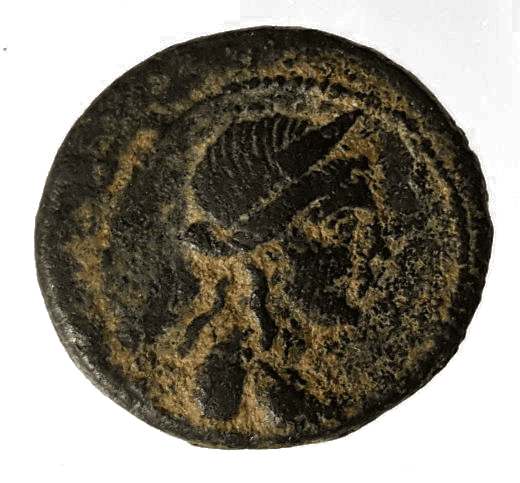
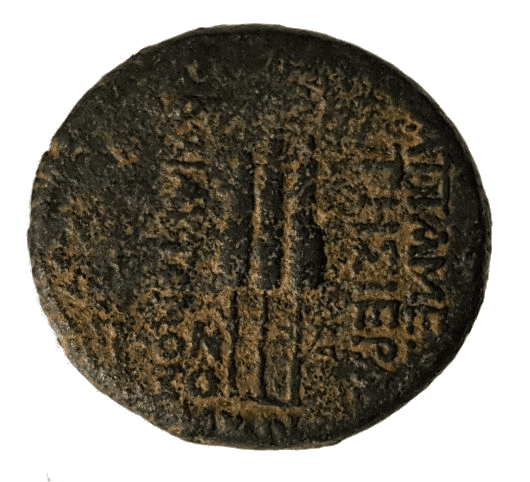
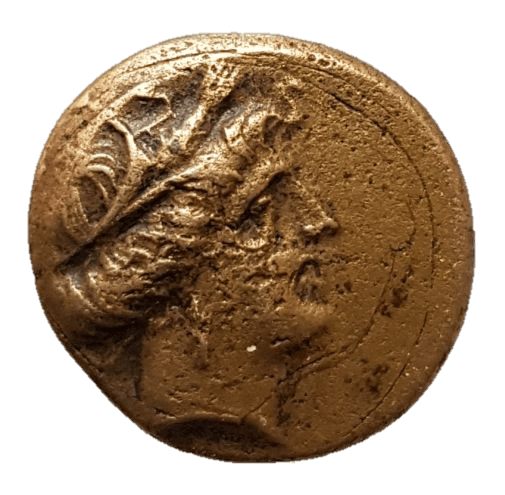
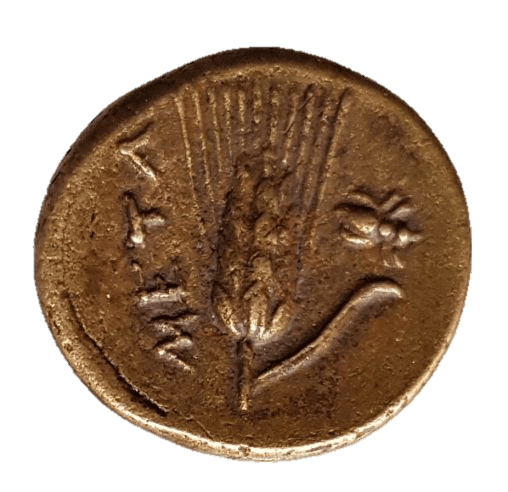
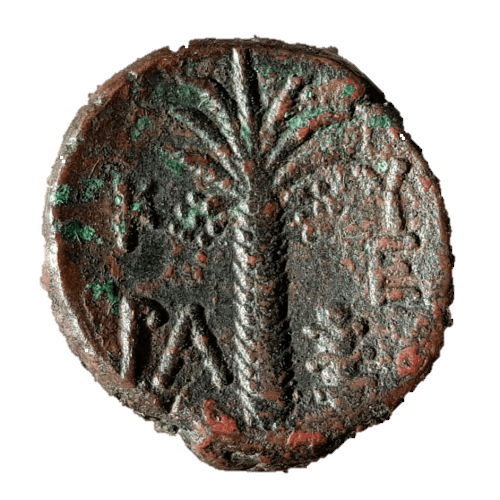
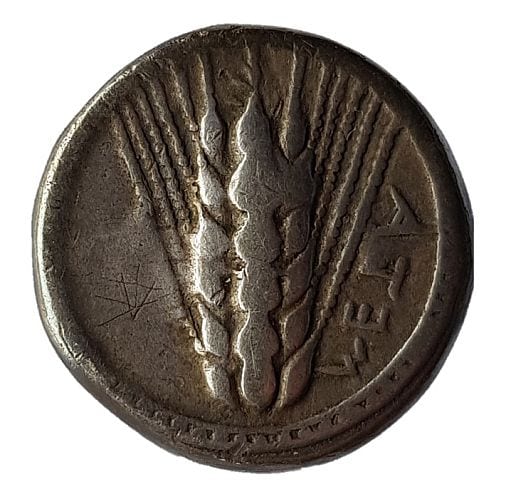
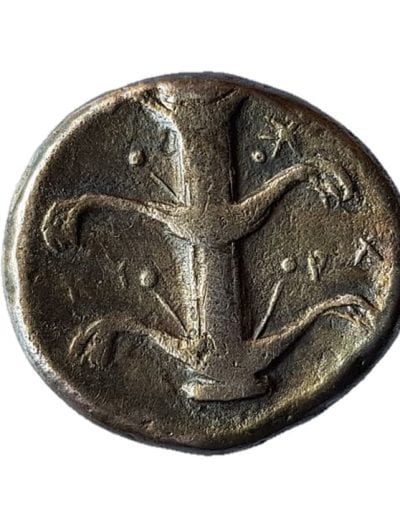
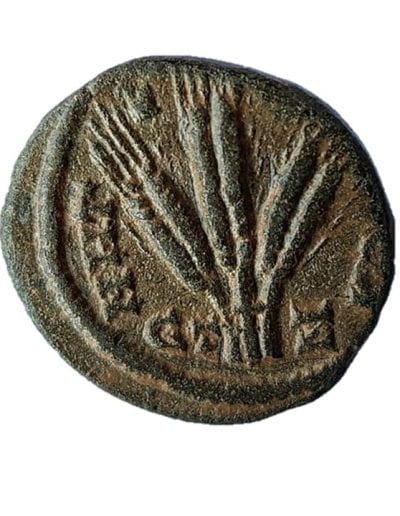
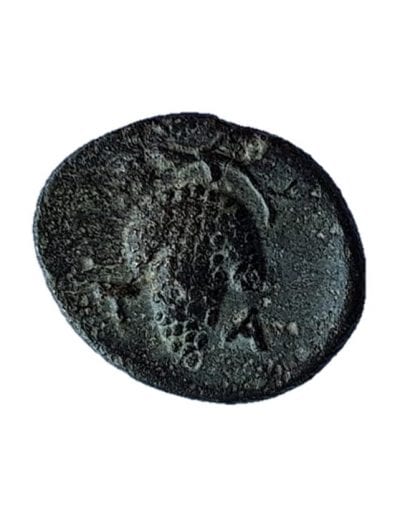




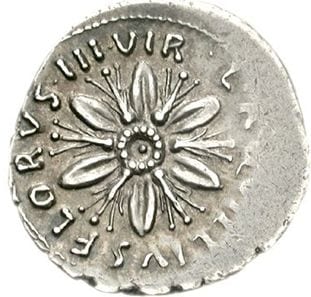
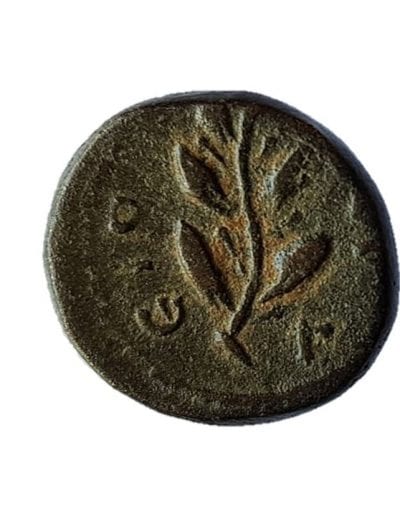



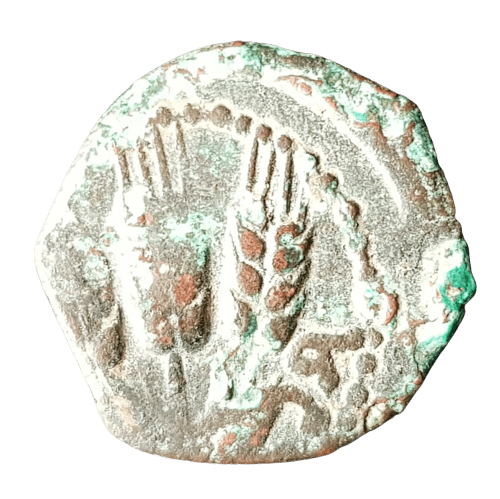

0 Comments